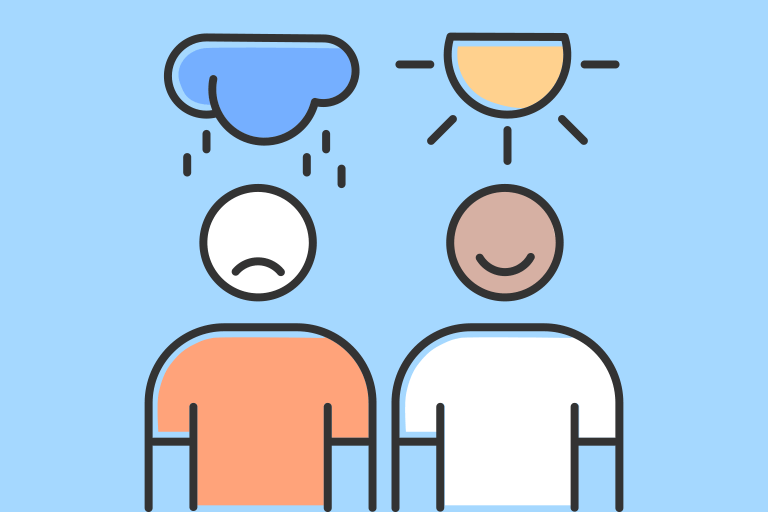Seasonal affective disorder is a relatively common condition, impacting as many as 10 million people each year. While both men and women develop seasonal affective disorder, women are twice as likely as men to struggle with this condition. It can be difficult to pinpoint, but with proper diagnosis and intervention, people can manage seasonal affective disorder and maintain a greater sense of peace and stability year-round. In this blog, we’re going to explore what exactly seasonal affective disorder is, common warning signs, and beneficial interventions to help manage the impact of seasonal affective disorder.
What Is Seasonal Affective Disorder?
Season affective disorder, which is often appropriately shortened to SAD, is a depression diagnosis related to changes in the season. It’s most commonly linked to the colder, darker fall and winter seasons, but some individuals do develop SAD during the spring and summer. SAD impacts individuals by changing their mood and/or energy levels, leaving them feeling unsatisfied, exhausted, and lacking motivation. In most cases, the symptoms resolve themselves at the end of the season, and the individual notices a marked difference between their mood and energy from one season to the next.
Who Develops SAD?
Anyone can develop SAD, but it is significantly more common in women. Additionally, teens and young adults are more likely to be impacted by SAD than older adults. Family history also plays a role in the development of SAD. Those who have family members who struggle with SAD, especially close family members are more likely to develop it themselves. Struggles with other depression diagnoses may also increase risk. Biologically, people who have vitamin D deficiency or live further from the equator where they receive less vitamin D through sunlight tend to be more frequently impacted by SAD.
Do I Have SAD?
SAD can be a difficult diagnosis because it requires the individual or their therapist to notice the pattern. For people who struggle with mood disorders, SAD may be hard to differentiate. If you notice increased feelings of sadness, exhaustion, low mood, irritability, mood swings, loss of interest, and lack of motivation during specific seasons, you may be dealing with SAD. This condition can also cause physical changes like sleeping too much or too little and eating too much or not enough. SAD may also lead to cognitive changes like difficulty concentrating and inability to remember details.
Can I Improve SAD Symptoms at Home
To improve SAD symptoms, a physician or therapist may recommend some lifestyle changes and steps you can take at home. This could include light therapy. There are specialized light bulbs for your lamps that mimic the positive impact of sunlight, including increasing vitamin D production. Your physician may also recommend a vitamin D supplement, especially if you struggle with SAD during the fall and winter months. Some other at-home steps to improve SAD symptoms include:
Let in the sunlight. Open blinds or curtains whenever the sun is shining, and you need to be indoors.
Take a walk outside. Do yoga in the park. Going outside and engaging in exercise can both contribute to improving mood-related symptoms of SAD.
Stay hydrated and eat a nutrient-rich diet. This helps to ensure your body has the
necessary resources to function well, so you can work against the exhaustion and lack of motivation related to SAD.
Keep a consistent sleep routine. Go to bed and wake up around the same time each day. This teaches your body to fall asleep more quickly and stay asleep through the night.
How Does Therapy Help?
Therapy is beneficial for SAD, especially when the impact of this condition is making it difficult to keep up with your daily routines. Therapy to address SAD helps people to develop strategies and tools to manage symptoms of this condition. These strategies help when dealing with stress, feelings of isolation, depressive thinking, and other changes in mood or thoughts. Therapy can also be an important element in avoiding unhelpful coping behaviors like drinking excessively and eating too much.
If you’re interested in getting started, please reach out to us at Lotus Psychology Group. You can call our therapy team at (248) 957-8973, email at info@lotuspsychgroup.com, or complete our online contact form. We look forward to hearing from you.


